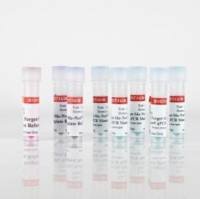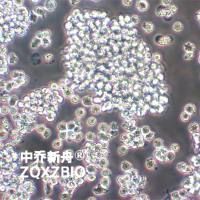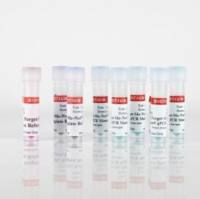The Relevance of the T1/T2 Paradigm in Immunotoxicology: Example of Drug Hypersensitivity Reactions
互联网
412
Early events in an immune response stimulate the production of cytokines that direct the subsequent development of T-cells. The innate immune system initiates T-cell activation by inducing na�ve T-cells to differentiate into functional effector or memory T-cells. Effector T-cells produce cytokines and chemokines, which in turn affect the function (differentiation, proliferation, migration, etc.) of innate and adaptive immune cells. The effect of chronic immunization, infection, or disease results in the differentiation of na�ve T-cells into polarized subsets of effector T-cells that can be differentiated from each other by the cytokines each T-cell subset produces. The Th1/Th2 paradigm is the best characterized example of T-cell polarization. In simplest terms, T-helper cell type 1 (Th1) and T-helper cell type 2 (Th2) cells are defined as differentiated CD4+ αβ T-cells that produce predominantly interferon (IFN)-γ or interleukin (IL)-4, respectively (1 ). Th1 and Th2 cells can be differentiated phenotypically and functionally by parameters other than IFN-γ and IL-4 production, but these two cytokines quintessentially define the Th1/Th2 paradigm. The function of Th1 and Th2 cells is to help or instruct the innate and adaptive immune systems to respond in a specific manner to pathogens and cancer cells. In general, Th1 cells help the immune system respond to intracellular pathogens, and Th2 cells help the immune system respond to extracellular pathogens. Polarized Th1 and Th2 immunity should be considered endpoints of T-cell differentiation in response to chronic immunization or disease. Similar to CD4+ T-cells, CD8+ T-cells can develop into IFN-γ- or IL-4-producing cells, also called T cytotoxic-type 1 (Tc1) and T cytotoxic-type 2 (Tc2) cells, respectively. The nomenclature can be simplified to include both Th1 and Tc1 cells as T1 cells. Similarly, Th2 and Tc2 cells are grouped together as T2 cells. Finally, uncontrolled T-cell responses can lead to pathologies, such as T1-mediated organ autoimmunity or T2-mediated asthma and allergy.
This chapter will provide an overview of T1/T2 responses to xenobiotics, with a focus on nonclinical evidence of the involvement of the T1/T2 paradigm in hypersensitivity reactions and on the clinical evidence of various T-cell populations involved in drug hypersensitivities. This chapter will then focus on the regulation of T1 and T2 responses, both in humans and in the mouse. Finally, it will provide an overview of methods available to measure T1 and T2 immunity.









